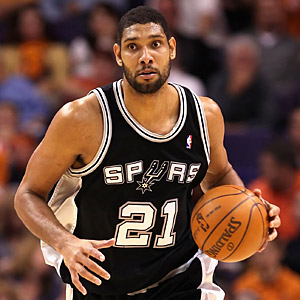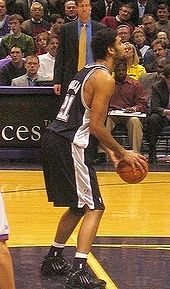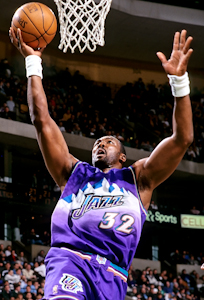 Tim Duncan is a
Tim Duncan is a horrible pretty darn bad free throw shooter. If you’ve been following the NBA for the past decade and a half, you have probably come to accept that truism.
Except for one thing:
It isn’t true anymore.
It’s not even close to true. It is, in fact, astoundingly untrue this season.
Duncan went to the free throw line four times in San Antonio’s 90-85 victory over the Philadelphia 76ers on Monday, and he knocked down all four.
That perfect performance bumped his season percentage up to .826, ranking him 39th in the league. And Monday marked the 20th consecutive game in which Duncan has not missed more than one free throw — an astounding string for a player whose struggles from the line earlier in his career were viewed as his defining deficiency.
Duncan has been perfect from the line in 16 games — all of which have come since Nov. 23 in the Spurs’ 13th game of the season. He is ranked higher, percentage-wise, than Tony Parker, Luol Deng, Danilo Gallinari, Russell Westbrook, Paul George and J.R. Smith – all of whom have made more than 80 percent of their attempts.
What’s up with this transformation?
“I have done nothing to change my shot at the line. I really do not know what it is,” said Duncan, a career 69 percent shooter who bottomed out at .599 in 2003-04.
Although there was another moment when he bottomed out even worse, on the NBA’s biggest stage.
___
 On June 19th, 2005, the San Antonio Spurs were a minute of basketball away from taking a commanding 3-2 lead over the Detroit Pistons in the NBA Finals at the Palace of Auburn Hills. With an 88-87 lead and with Duncan at the free throw line for two shots, Spurs fans had to like their chances of pulling out the victory.
On June 19th, 2005, the San Antonio Spurs were a minute of basketball away from taking a commanding 3-2 lead over the Detroit Pistons in the NBA Finals at the Palace of Auburn Hills. With an 88-87 lead and with Duncan at the free throw line for two shots, Spurs fans had to like their chances of pulling out the victory.
Then, something bizarre happened: the ever-composed Duncan lost total control. Already having missed his first three free throw attempts of the fourth period, Duncan stood at the line with a minute left and helplessly missed his next two free shots.
When he returned to the line with an opportunity to give his team the lead with 34 seconds left, Duncan missed another crucial free throw to mark six consecutive missed shots.
A game that the Spurs should have won handily was forced into overtime.
Had it not been for Spurs’ forward Robert “Big Shot Bob” Horry’s heroic 3-pointer with 5.8 seconds to steal the win from Detroit, the Pistons would have won Game 5 of the finals and probably would have gone on to win the 2005 NBA Championship in large part to Duncan’s 4-for-11 night at the line.
After the game, Duncan called his performance “an absolute nightmare” to the media. It was the first (and perhaps the only) time Duncan has looked mortal on the NBA’s largest stage.
Over the course of history, it has been a common occurrence for poor free throw shooters to improve their free throw percentages throughout their NBA careers.
 Karl Malone, for example, shot only 48% from the free throw line as a rookie. However, Malone became a 70 percent free throw shooter by his third year in the league and shot worse than 70 percent only once more in his 19-year career.
Karl Malone, for example, shot only 48% from the free throw line as a rookie. However, Malone became a 70 percent free throw shooter by his third year in the league and shot worse than 70 percent only once more in his 19-year career.
In Malone’s case, his poor free throw shooting was due to a combination of a lack of confidence and poor form. Both of these issues were easily corrected as he matured mentally and physically into an NBA star.
However, for already decent free throw shooters, improving free throws is another matter entirely.
Without identifiable issues in mentality or form, it is hard for coaches to point out something tangible for the shooters to correct. Consequently, in nearly every case, decent free throw shooters do not improve nor regress throughout their careers. They merely remain decent.
This trend is what makes Duncan’s sudden improvement at the line so fascinating. Duncan, at age 36, has finally broken out of the “decent” category and is becoming a consistent converter at the line. In fact, Duncan is on pace to do what only two players in NBA history (Kevin Willis in 1998, Jamal Mashburn in 2001) have done before him: improve his free throw percentage by 13% or greater from his career average.